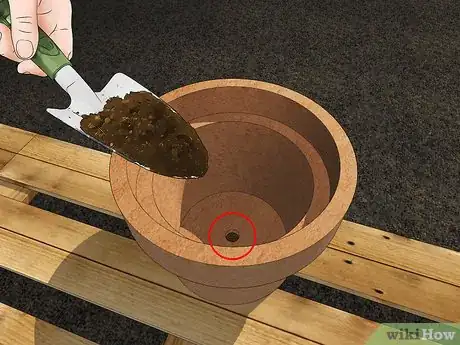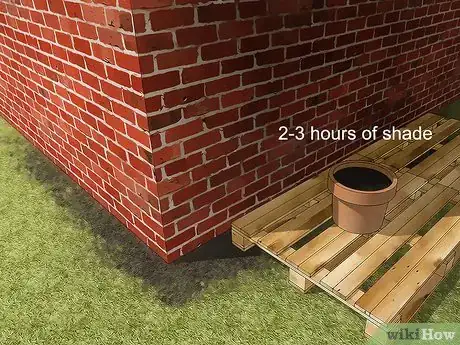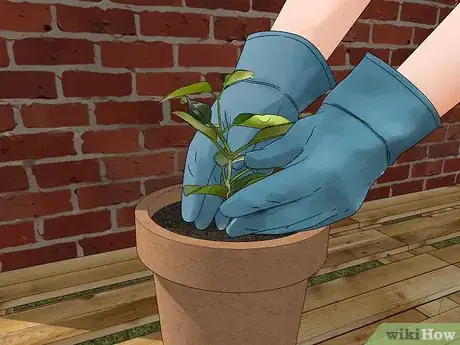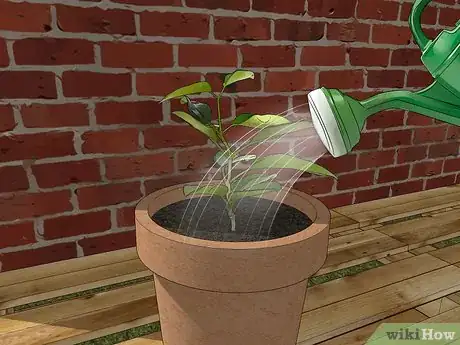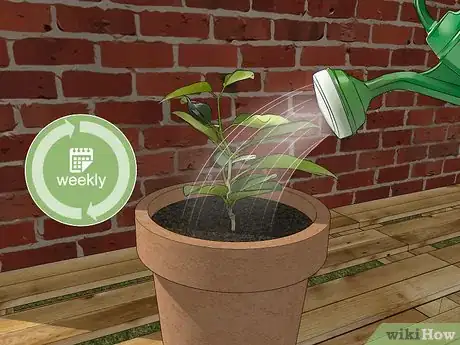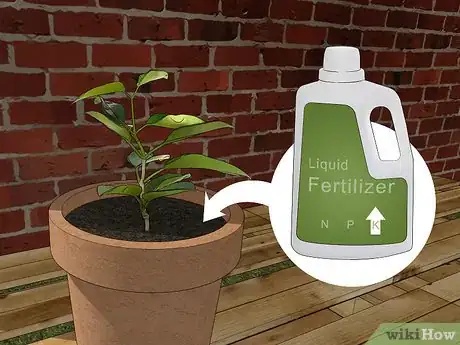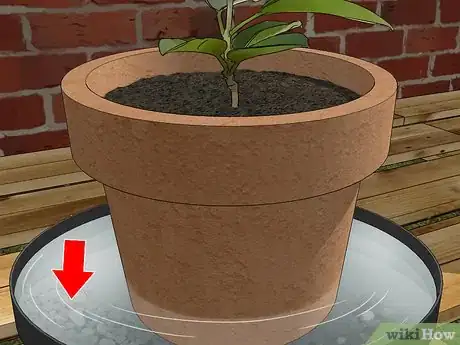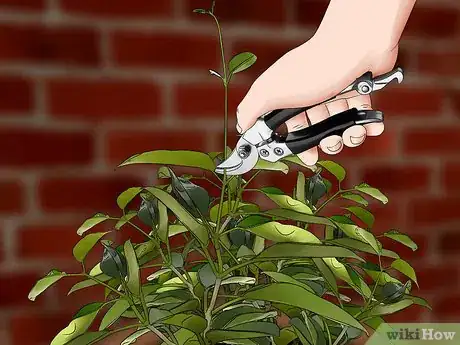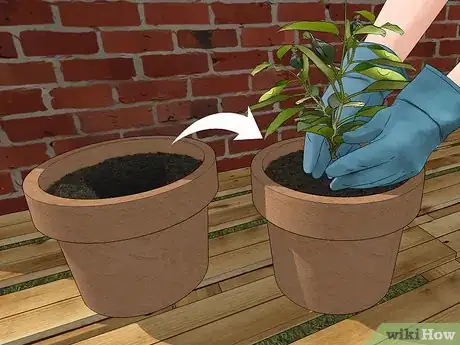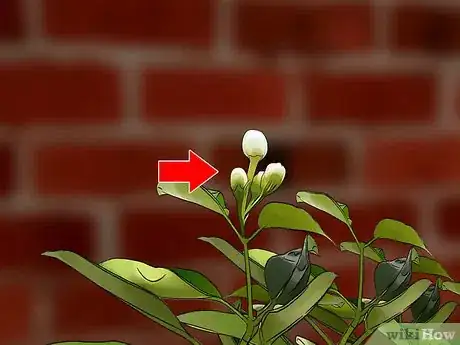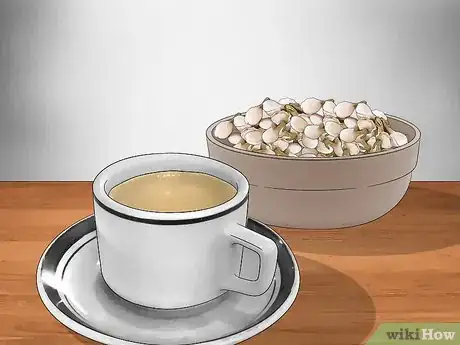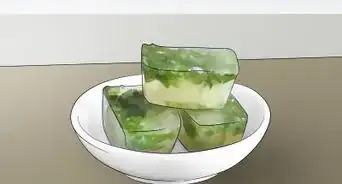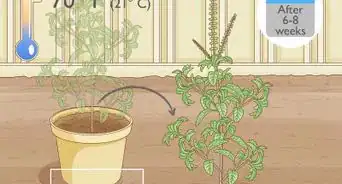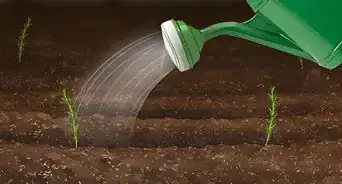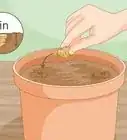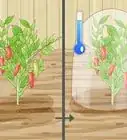This article was co-authored by Melinda Meservy. Melinda Meservy is a Plant Specialist and the Owner of Thyme and Place, a botanical boutique offering plants and gifts in Salt Lake City, Utah. Before starting her own business, Melinda worked in process and business improvement and data analytics. Melinda earned a BA in History from the University of Utah, is trained in lean and agile methodologies, and completed her Certified Professional Facilitator certification. Thyme and Place offers indoor plants and containers, a fully stocked potting bench, and tips on plants to suit your space and lifestyle.
There are 14 references cited in this article, which can be found at the bottom of the page.
wikiHow marks an article as reader-approved once it receives enough positive feedback. In this case, 88% of readers who voted found the article helpful, earning it our reader-approved status.
This article has been viewed 137,239 times.
Whether grown indoors or outdoors, jasmine makes for a beautiful and aromatic plant. As long as jasmine is grown in well-draining soil and with plenty of sun, humidity, and water, it adapts well to potted environments. Once you've grown potted jasmine, you can use it as a houseplant or harvest its flowers for teas or decorations. With time and plenty of care, your jasmine will thrive as a potted plant!
Steps
Planting Jasmine in Pots
-
1
-
2Place the pot in an area with partial shade. Jasmine prefers warm temperatures (at least 60 °F (16 °C)) and several hours of shade to grow. Choose a spot for your jasmine pot that receives sunlight but with around 2-3 hours of shade a day.[5]
- If placing the pot indoors, choose a place near a south-facing window so it can receive direct sunlight.[6]
Advertisement -
3Plant a jasmine seed or seedling in the pot. Cover the seed with a light layer of soil. If you're planting a seedling, make sure the crown of the plant is level with the soil. Cover the roots completely.[7]
- If you're planting a seedling, loosen the roots with your hands to help it adapt to its new environment faster.[8]
- You can buy jasmine seeds or seedlings from most garden centers or nurseries.
-
4Water the jasmine immediately after planting it. Using a watering can or hose, water your plant until water runs out the drainage holes. When you're finished watering, the soil should be damp but not waterlogged.[9]
- Watering the flower immediately will moisten the soil and help your plant acclimate to the pot.
- For best results, use a spray bottle or watering can to moisten the freshly-planted jasmine.
Caring for Jasmine
-
1Water the jasmine plant weekly. Use a hose or watering can to keep the soil moist and the plant hydrated. Water the plant once a week or whenever the soil dries out, depending on the climate.[10]
- If you're not sure whether to water the plant, poke your finger in the dirt about 1–2 inches (2.5–5.1 cm) deep. If the soil is dry, water the jasmine.
-
2Apply a potassium-rich fertilizer once a month. Jasmine plants grow best in potassium-rich soil. Buy a liquid fertilizer with a high potassium content and spray the leaves, stem, and soil once monthly.[11]
- You can find potassium-rich fertilizers at most plant nurseries. For example, a tomato fertilizer is a good option, as it's rich in potassium.
-
3Place a humidifier or pebble tray near the jasmine. Jasmine plants grow best with plenty of humidity. If you're growing jasmine in a dry climate, use a humidifier or fill a pebble tray with water to mimic the plant's natural environment.[12]
- If you live in a humid climate, place the pot outside or open a window instead.
-
4
-
5Repot the plant if the soil dries out quickly. Jasmine plants produce more flowers if their roots are not crowded (or "root bound"). If the plant's soil dries out after 2-3 days, transfer it to a larger pot or outside.[15]
- It's also best to transfer your plant if it's been in the same pot for several years. It's normal for plants to outgrow their pot.
Harvesting Potted Jasmine Buds
-
1Harvest jasmine to make tea. Traditionally, jasmine buds are steeped in teas for a fragrant herbal tea. Although you can grow your jasmine as a strictly decorative plant, harvesting its buds can help you get more use out of it.[16]
- You can also cut jasmine flower stems with shears and transfer them to a vase as an indoor decoration.[17]
-
2Pluck green, unopened jasmine buds at the stem. As your jasmine's flower buds develop, wait until they are green but not yet opened. Use your hands or pruning shears to pick as many jasmine buds as you need for your tea or oil.[18]
- Use the jasmine buds immediately after picking for ideal freshness, particularly if you're making tea.[19]
-
3Dry the jasmine buds in an oven. Place the jasmine buds on a baking sheet and set the oven to 200 °F (93 °C). Keep the buds in the oven for 2-3 hours or until the jasmine buds are completely dry to the touch.[20]
- You can store the dried jasmine buds in an airtight container to help them last longer.
-
4Steep the dried jasmine buds in water to make herbal tea. Bring a kettle of water to a boil and steep the jasmine in the water for about 2-5 minutes. After steeping the water, turn off the stove and pour the water into a cup to serve.
- The ratio of jasmine buds to water should be about 1 tablespoon (15 mL) to 8 ounces (230 g).
- You can also mix the jasmine buds with black or green tea leaves for a stronger flavor.[21]
Community Q&A
-
QuestionCan I grow jasmine on a very shady balcony?
 NinoxTop AnswererNo, jasmine requires light the majority of the day to bloom and develop healthily.
NinoxTop AnswererNo, jasmine requires light the majority of the day to bloom and develop healthily. -
QuestionHow fast does the jasmine grow?
 NinoxTop AnswererIt takes roughly 1 year for the jasmine to grow from a cutting to a fully mature plant.
NinoxTop AnswererIt takes roughly 1 year for the jasmine to grow from a cutting to a fully mature plant. -
QuestionHow is it best to keep the runners under control?
 NinoxTop AnswererYou have to cut the damaged branches after blooming and do a larger cutting every 2-3 years to keep it under control.
NinoxTop AnswererYou have to cut the damaged branches after blooming and do a larger cutting every 2-3 years to keep it under control.
Things You'll Need
- Flower pot
- Well-draining soil
- Jasmine seed or seedling
- Hose or watering can
- Potassium-rich liquid fertilizer
- Water
- Humidifier or pebble tray
- Pruning shears
- Baking pan
- Kettle
References
- ↑ Melinda Meservy. Plant Specialist. Expert Interview. 18 August 2020.
- ↑ https://www.saga.co.uk/magazine/home-garden/gardening/plants/climbers/how-to-grow-jasmine
- ↑ https://www.todayshomeowner.com/flower-containers-for-beginners/
- ↑ https://www.treepeople.org/sites/default/files/pdf/resources/How-to%20Test%20Soil%20Drainage.pdf
- ↑ https://www.saga.co.uk/magazine/home-garden/gardening/plants/climbers/how-to-grow-jasmine
- ↑ http://www.gardenloversclub.com/ornamental/flowers/jasmine/growing-jasmine-plants/
- ↑ https://www.todayshomeowner.com/flower-containers-for-beginners/
- ↑ https://www.bhg.com/gardening/how-to-garden/how-to-plant-flowers/
- ↑ https://www.todayshomeowner.com/flower-containers-for-beginners/
- ↑ https://www.rhs.org.uk/advice/profile?PID=291
- ↑ https://www.saga.co.uk/magazine/home-garden/gardening/plants/climbers/how-to-grow-jasmine
- ↑ https://www.houseplant411.com/houseplant/jasmine-plant-how-to-grow-care
- ↑ Melinda Meservy. Plant Specialist. Expert Interview. 18 August 2020.
- ↑ https://www.almanac.com/plant/jasmine
- ↑ https://www.houseplant411.com/houseplant/jasmine-plant-how-to-grow-care
- ↑ http://homegardeners.in/grow-care-jasmine-plant/
- ↑ http://homegardeners.in/grow-care-jasmine-plant/
- ↑ http://nhb.gov.in/pdf/flowers/jasmine/jas003.pdf
- ↑ https://nittygrittylife.com/how-to-make-jasmine-tea/
- ↑ https://madeinaday.com/oven-dried-flowers/
- ↑ http://dish.allrecipes.com/brew-the-perfect-cup-of-tea/
About This Article
To grow jasmine in a pot, you’ll need well-draining soil and plenty of sun, humidity, and water. Start by filling a pot with well-draining potting mix or add loam-based compost to the soil to improve its drainage. Also, make sure the pot you use has drainage holes to avoid overwatering the plant. You can test the soil’s drainage by digging a hole about 12 inches deep and filling it with water. If it drains in 5 to 15 minutes, then it’s good. Put the pot in an area with partial shade, then place a seed under a light layer of soil. Water your jasmine immediately after planting it to help your plant acclimate to the pot. Once your jasmine is properly planted, water it weekly or whenever the soil dries out. Additionally, add a potassium-rich fertilizer to the pot once a month. Since jasmine grows best in humidity, use a humidifier or fill a pebble tray with water if you don’t live in a humid climate. For more tips from our Horticultural co-author, including how to prune a jasmine plant, keep reading!.
